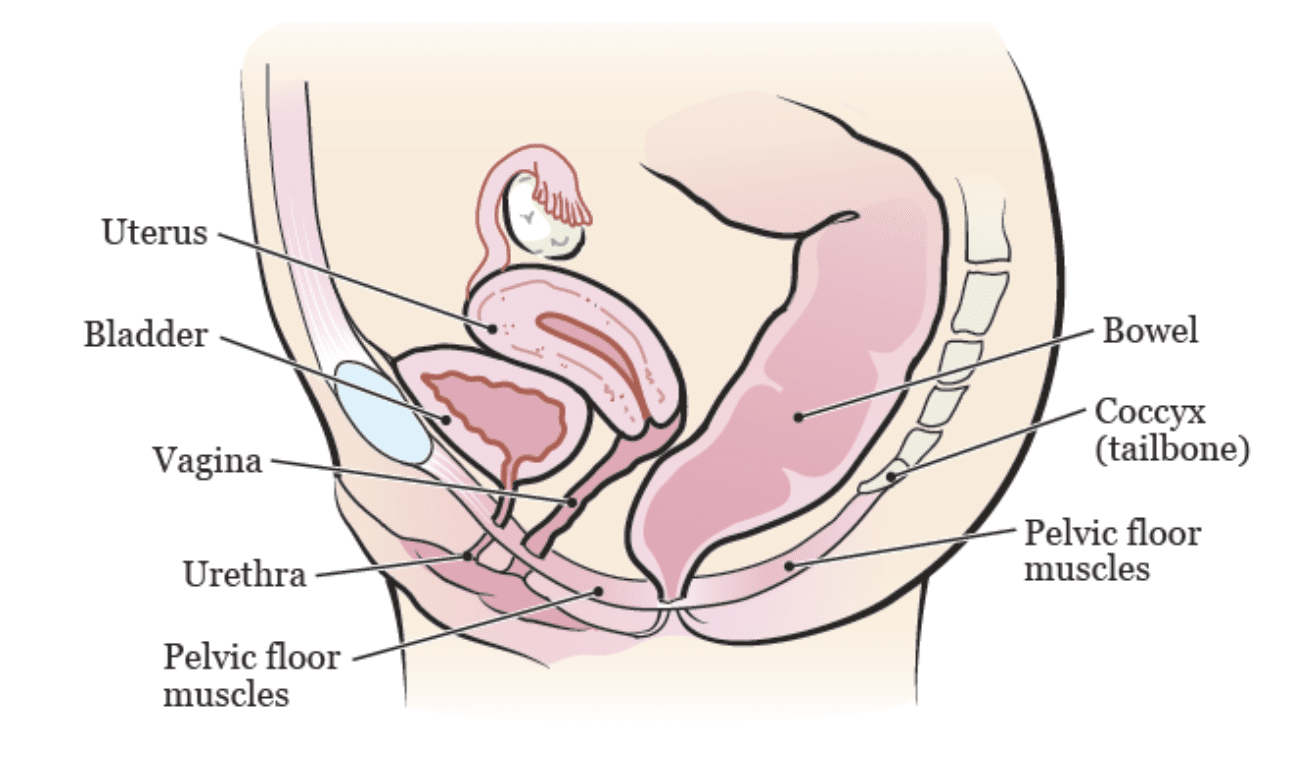
What is the pelvic floor and what the heck is a kegel?
You may have heard of kegels but are unsure as to what they are or if you should be doing them. We’re here to provide some general information so that you understand what they are and can decide if practicing them is right for you.
Kegels are another name for pelvic floor exercises used to strengthen the muscles supporting the bottom of your pelvis. These pelvic floor muscles support your uterus, vagina, rectum, urethra and bladder and are important for decreasing the risk of stress urinary incontinence (e.g. accidentally leaking urine when you cough or sneeze).
Also, if you are planning a future pregnancy or are pregnant, you may find it useful to have greater control of these muscles during the delivery process. In addition, some women find that being able to tighten and relax their pelvic floor muscles under voluntary control contributes to improved sexual arousal satisfaction. If you would like more information on sexual satisfaction and Kegels, consider visiting the Sloan Kettering website or the University of Chicago Medical Center.
Below are instructions for practicing kegels or pelvic floor muscle exercises
-
Contract your pelvic floor muscles:
Tighten the muscles that surround your urethra and rectum. These are the same muscles that you would use to stop urinating if you were to stop midstream. However, don’t voluntarily try to stop urinating midstream as it can actually increase your risk of urinary tract infections and other medical problems.
Another way to identify the pelvic floor muscles that you want to contract during kegels is to insert a clean finger about an inch inside the vagina and tighten the pelvic floor muscles. You should be able to feel the muscles tightening around or squeezing your finger. When you tighten the pelvic floor muscles it may feel like they are pulling inward and upward which is normal.
If you are unsure whether or not you are contracting the right muscles, talk to your CNM or Ob-Gyn as they will likely be able to assist you or can even refer you to a physical therapist with expertise in pelvic floor work.
-
Breathe:
When contracting your pelvic floor muscles, remember to continue regular breathing as it is easy to sometimes hold your breath when you are concentrating on contracting muscles. Also, make sure that you are not tightening your thighs, abdomen, or buttock muscles as this will not help your pelvic floor muscles strengthen.

Improve Sexual Health with Kegel Exercises
-
Relax:
Next relax the pelvic floor muscles. You don’t need to nor should you push or bear down to relax them. Instead, just stop squeezing or contracting the muscles and they should naturally relax. When you are relaxing and urinating, your pelvic floor muscles should also normally be relaxed.
-
Repeat:
Repeat this contracting/tightening and relaxing process. If you want more information on how to do Kegels, consider visiting the Mayo Clinic’s website How-to-Guide for Kegel Exercises.
-
Patience:
Increasing pelvic floor muscle strength. Strengthening the pelvic floor muscles takes time, just like strengthening other muscles in our body. When you initially start these exercises, try holding the contraction for about 3 seconds before relaxing for at least 3 seconds. You can repeat the 3 second contractions followed by 3 seconds of relaxation, 10 times. Try doing this three times daily.
Gradually you can work up to squeezing or contracting the pelvic floor muscles longer as your muscles get stronger, for example, holding the pelvic floor muscle contractions for 10 seconds each time with 10 seconds of relaxation between each contraction, with 10 repetitions per set, and 3 sets daily.
You do not need to use vaginal weights, balls, or other devices inside the vagina when doing kegels. Simply tightening the muscles and relaxing them repeatedly is enough to sufficiently strengthen them for most people. If you try this and are still unsure as to whether or not you are strengthening the correct muscles or if you are struggling with bowel or bladder incontinence, reach out to your Diana health provider, midwife, or physician as not all incontinence issues can be addressed with kegels. They may refer you to a physical therapist with special training in pelvic floor physical therapy who can assist you or provide other support. You can learn more about how specially trained physical therapists can support pelvic health by visiting this website. For more information about Kegels and urinary incontinence, you can read this WebMD articleon this topic.
Share This Post
























